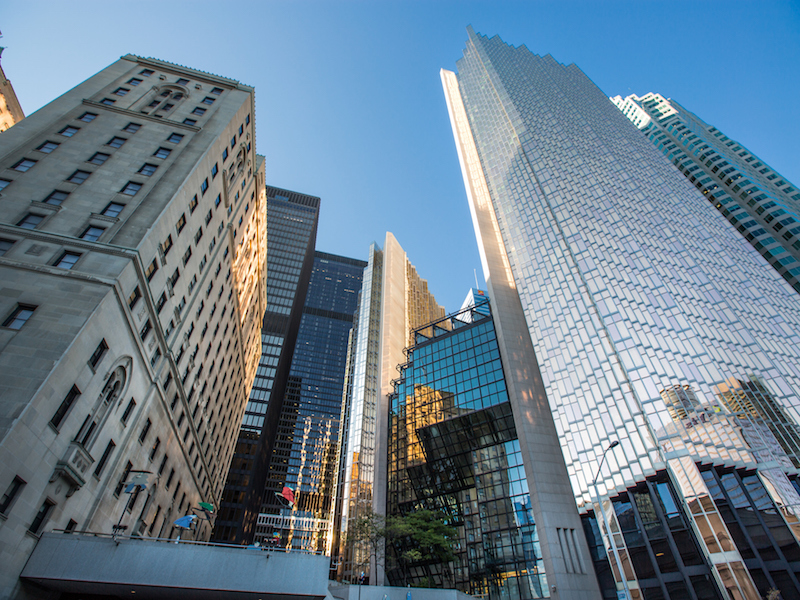

Despite recent uptick in U.S. commercial office real estate landlords defaulting on their loans, the chances of the same trend moving north of the border is low, says Jim Clayton, professor and Timothy R. Price chair in real estate and infrastructure with the Schulich School of Business at York University.
Since the onset of the coronavirus pandemic, commercial real estate landlords have been navigating a challenging environment that’s seen their assets de-valued amid inflation, high interest rates and supply-and-demand issues stemming from the shift to remote working. In the U.S., banks have subsequently pulled back on lending, leading some landlords to simply default and return the keys to their buildings.
Read: How will coronavirus affect real estate investing long term?
“The property values probably dropped far enough that it’s below the balance owing on the loan, so they’re [not] going to refinance that loan for that full balance amount,” says Clayton. “They’re going to have to . . . make a decision [on] whether to put more equity in the property, pay off the loan or just walk away.”
In the U.S., default tends to be a lot more strategic, he adds, noting many loans in commercial mortgage–backed securities are non-recourse, meaning the properties are the only collateral, so the default doesn’t affect the borrower’s other assets.
Though Canada’s commercial real estate market picture isn’t much rosier, Clayton says it would be tougher for office landlords to take the same strategy. Canada’s lending market is more conservative, he adds, noting there’s a smaller number of lenders and these types of loans have more recourse. Borrowers would lose some of their other capital or assets and it would be harder for them to find lenders to help dig them out of the hole.
Still, considering Canadian pension funds are typically allocating 12 to 15 per cent of their portfolios to real estate, there could be cause to worry about the potential effects of these defaults on their portfolios and returns. In Canada, the national total commercial office vacancy rate remained around 13 per cent at the end of the second quarter of 2023, according to a report by Colliers International Group Inc., with 84.4 million square feet of vacant commercial office space across the country.
Many pension funds saw these hurdles coming and have stayed away — to some extent — from office and retail, focusing instead on multi-family, industrial and even so-called alternatives, such as self storage and data centres, says Clayton.
“The pension fund community, by and large, is fairly conservative when it comes to leverage, so they can absorb a lot more [risk]. Many — especially the astute Canadian [pension funds] that have capital — have the ability to behave strategically and take advantage of some of this opportunity.”
As well, there’s significant government support in Canada, both federally and locally, for some of the bigger environmental, social and governance value-add investments through funding entities such as the Canadian Infrastructure Bank, as well as green subsidies through municipalities, adds Clayton, noting Calgary is offering subsidies to investors that buy office buildings and want to convert them to residential use. “I think there’s a lot of mitigates that will prevent . . . [widespread] distress in Canada versus the U.S.”
Rather, he’s seeing a flight to quality in the commercial office real estate market. The risk of default is in some class B and C offices that are struggling because of the economic environment, he adds, and that’s being reinforced by the uncertainty of demand. While workplaces are still figuring out the evolution of hybrid working, ESG regulations are also coming into play. As a result, he expects many building owners of older office assets will see diminished demand coupled with large capital expenditure requirements coming down the pike.
“A lot of folks really want to put this on the demand side, but . . . it’s [also] just a normal supply issue. Toronto brought on . . . 11 million square feet [of office space] just before COVID and now, in a downturn, it’s actually slowly firming up . . . that the class A stuff is spoken for. Five years from now, we probably won’t be building quite as much as we did and demand will slowly be picking up.”
